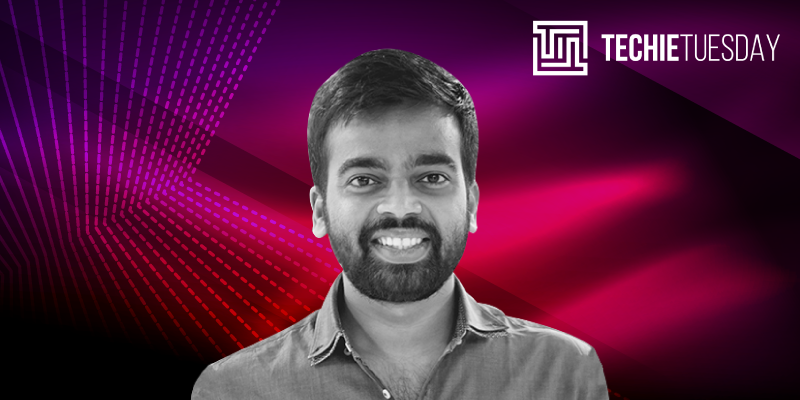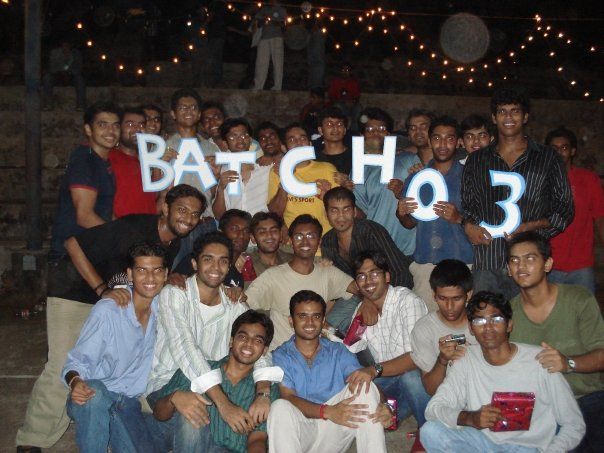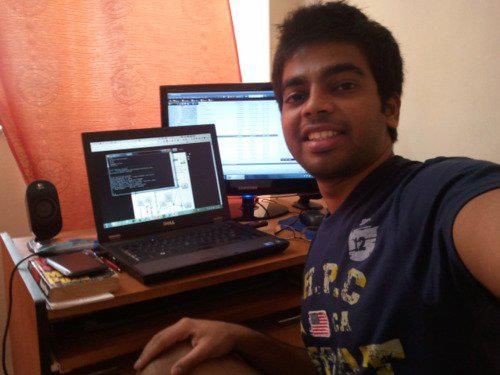Nischal Shetty doesn’t get as much opportunity to code or program now as he did a decade back. As Co-founder and CEO of bitcoin exchange WazirX, he focuses on growth and product development.
However, his coding and programming journey began over two decades back when he first developed a game.

Born and raised in Mumbai, Nischal’s father ran a restaurant business in the city, and his mother was a homemaker. “I grew up seeing my father run the business, but never wanted to join him as I was already was hooked to computers,” he recollects.
In the late 90s, computer classes were becoming the rage. Nischal was in Class 5 when he was introduced to computers in school, and was fascinated. One of his cousins became a computer engineer, which also influenced the young lad.
“Conversations with him were around how being a computer engineer was the best thing. How one code could change the physical world, the beauty of it…it was fascinating and interesting. I took up science as a natural progression,” he says.
When Nischal was in Class 12, a close family member fell seriously ill. This led him to consider medicine as a career. But he ultimately chose computer science as he didn’t get through a good medical school. “In hindsight, that was a good call because today I realise that I am a much better techie than I would have been a doctor.”
Nischal went on to join MMAMIT engineering college in Mangalore, Karnataka. The first year was all about friends and fun, but things changed in the second year (2004) during a coding project.
Coding felt like coming home.
The ‘Bug’ game
Nischal had built Bug Attack, a game in C++ graphics where a virtual farm was attacked by bugs that had to be stopped by shooting at them. “I realised that a software engineer just needed skills to change the world around them. I saw it as art, where a painter could paint a landscape with just their talent and skill ,” Nischal explains.
Soon, engineering wasn’t just a professional degree he was working towards; it became a passion. “The ability to build something and use it, ensuring that people around you can also use it, is powerful,” he Nischal.
Nischal, who had been using programs that someone else had built, became a creator with Bug Attack.
He soon realised that engineering would have “to be self-taught” and started learning online, reading books, and coding. “It was the first year that we had internet in the college. We would get access for an hour and I would try and learn everything that was there on the internet,” Nischal says. Slowly, he learnt how to code.
In his fourth year, Nischal decided to build something from scratch for his project. It was 2006, a time when the internet wasn’t limited but was expensive. But the final year student had the option of downloading as much as he could after 9 pm for free.
“I had to read up a lot and needed access to the internet. I would have to wait until late night to work on my project. So, I decided that my final year project would be a desktop app that would download reading material from the internet from 9 pm to 6 am, when it was free,” he says.
The Knightloader app was built in dotnet and gave Nischal a strong understanding of desktop apps, which were the rage in 2006-07.
After his fourth year, in 2008, Nischal was placed at 3I infotech, a software company in Bengaluru.

Nischal Shetty during his engineering days
Building in the B2B space
At 3I, Nischal found that he was better than most of his peers at coding as he had already built and written several codes before starting a full-time job.
“Practising real coding in engineering rather than studying theory enhanced my skills. Most people take a few years to get the hang of real coding when they are at their jobs. It takes time to skill yourself. So, it is best to upskill yourself in college itself, especially if you want to be coder or developer,” he says.
The company built an application used by various recruitment agencies to sort resumes and understand the recruitment process better. Since this was in the pre-SaaS days, the team would have to go and install the app in every single recruitment agency.
“SaaS has changed all that now. In those days, if you even built a new feature, it would take a while before each client got access to that,” Nischal says.
Window into global products
While working at 3I infotech, Nischal signed up to join Twitter. Those were the early days of Twitter in India, and the microblogging platform offered insight into what applications and technologies were being used globally.
As a side project, he decided to start a blog about all the available products and tech. “I was exposed to different technology and products, but started feeling that while what I was building at 3I was great, the problem was that I couldn’t see who the end user was, I couldn’t get feedback, or see them using the product,” Nischal explains.
He contemplated building a user-facing product, and connected with Burrp Co-founder Anand Jain. Burrp was then a small team building a foodtech-focused, consumer-facing product. Nischal applied for a job at the startup in Mumbai in 2009-2010.
Working on foodtech
One of the features that Nischal initially built at Burrp was connecting people’s Twitter and Gmail accounts to Burrp. He felt it was important to let users easily share the names of restaurants they liked with their friends. The easiest way to do this was to allow people to import their address book from email.
“It was my first foray into the startup world. Until then, I had just read about startups. Working at a startup is different. I understood how in terms of speed of execution, ideation, and the way things happen. Also, you have the power of complete ownership,” Nischal says.
Starting on the side
The experience led to a new thought: why not build something of his own? Since he had no entrepreneurial aspirations, Nischal thought of building an app that gave a way to “unfollow people” on Twitter.
“In the early days, Twitter didn’t have a smart chronological thread that a person could see. So if you followed several people, your feed would be bombarded with too many tweets. I had to unfollow many people, but there weren’t many apps that helped me do that. Doing it manually for multiple people was difficult.”
Nischal built Just Unfollow, a simple prototype for his personal use. He built on top of the critical API and used Google App Engine. “Today it is commonplace, but in 2009, App Engine was an innovation that said you could take your app from zero to live in no time. That too, without deep infrastructure knowledge,” he says.
The App Engine made it easy for Nischal, who was still at Burrp, to take his code live without much effort. In 2010, he sent the prototype to TechCrunch, and J Michael Arrington, the Founder of the publication, used it. The app was written about in the publication.

Nischal Shetty after his Burrp stint
From Unfollow to Crowdfire
“On the first day, I had 5,000 people signing up. We eventually renamed Just Unfollow to Crowdfire in 2010,” Nischal says.
Nischal thought that people would stop using Just Unfollow within a few months, but he was proved wrong. The app continued to grow, and in six months of launch, he realised he had to pay a lot from his own pocket to manage the servers.
“I decided to monetise it just to pay the bills. I put a paywall, where if you wanted to unfollow more than ‘x’ number of people, you had to make a payment. Within a month I made more money than I paid for my server,” he says.
Soon, Nishal realised that this could be his startup. He quit Burrp in February 2010 to focus on Just Unfollow. It was also the time that Startup Chile was launching its first batch, and offered grants to people building their startup out of Chile.
“I had no location dependency, and Just Unfollow was a global problem. So along with Sameer (Mhatre), who was with me at Burrp, I went to Chile,” Nischal says. Sameer is also the Co-founder at WazirX.
After six months, they came back to Mumbai and started scaling the product. In 2015, the team was still bootstrapped, had seven million users, and over a $1 million in revenue. They soon raised $2.5 million from Kalaari Capital and scaled the startup to 15 million users.
By 2017, Nischal says Crowdfire was hyperscaling and had expanded to add other social platforms like Instagram and started building marketing tools for Twitter and Instagram.
The power of blockchain
“While we were scaling, we realised that all the founders were engineers, and I started taking interest in growth. I think that helped the company grow further, without venture capital for a long time,” Nischal says.
By 2017, social media platforms started changing the APIs and Crowdfire had to pivot into a social media management platform. Until then, the company had focused on user acquisition and organic growth. But with monetisation, the organic growth apps were the first to be hit.
“It made me realise that social media would change the rules of the game whenever the companies wanted. This was something that bothered me. The day they realise that this developer ecosystem is not right for them, they cut them off. This got me into the blockchain ecosystem, a permission-less system,” Nischal says.
Nischal didn’t take blockchain very seriously till 2017, a year that saw the bull run of bitcoin. But even then, buying the first bitcoin was a challenge. One had to wait for several days to credit the money and then buy.
The WazirX journey
This led to birth of WazirX as a bitcoin exchange in 2018. Nischal says they weren’t the first bitcoin exchange, which is why he started a pre-sign up page before building to understand if there was a need for a new bitcoin exchange. They got 20,000 sign-ups and started building in March 2018.
“But then, the banking ban on bitcoin happened, and we pivoted the model to peer-to-peer base…that helped WazirX grow,” Nischal says.
The crypto startup helps individuals build digital assets by buying, selling, or investing in other crypto assets, such as bitcoin, Litecoin, Ethereum, Ripple etc. It now is a part of Binance group, which is the world’s largest crypto exchange and serves users in 180 countries.
Speaking of what he likes building, Nischal says he is more of a backend developer, preferring to build APIs as the frontend development needs more knowledge of design thinking. “With the backend, you just have to write to code; that feels raw and real to me.”
What does he look for when hiring techies? He looks for passion as he believes that can help one learn anything.
“I have come across a lot of people who are coding or programming because they have a degree and not because they are motivated to do so. The problem with that is that it is hard to grow and scale. Passion is important; every other skill set is learnable,” he says.
Nischal offers more advice for techies: start looking at the user side while building. “Start thinking how your code is eventually going to be used in the product by the end user. This helps you code better and make a better product.”
(Edited by Teja Lele Desai)
Want to make your startup journey smooth? YS Education brings a comprehensive Funding Course, where you also get a chance to pitch your business plan to top investors. Click here to know more.
Link : https://yourstory.com/2020/07/techie-tuesday-wazirx-crypto-startup-nischal-shetty
Author :- Sindhu Kashyaap ( )
July 14, 2020 at 05:15AM
YourStory






